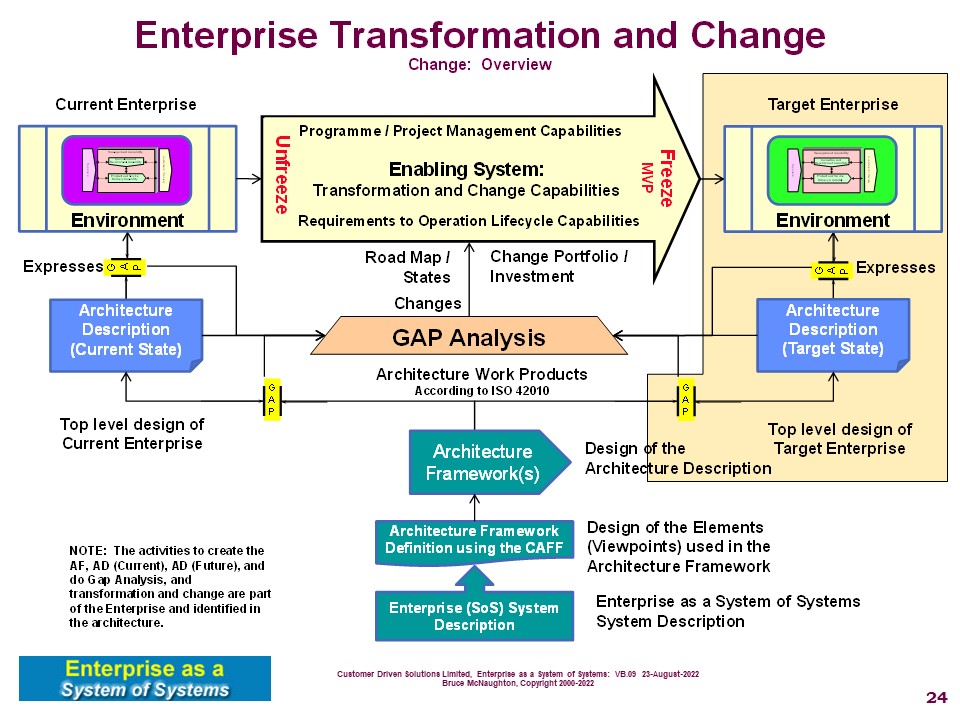 .
.
This is first informed by the enterprise purpose, vision, values, objectives and strategies. These are:
- Established if not available
- Reviewed and revised if necessary.
- Aligned to an environmental assessment (along with any assumptions)
The target options are discussed and identified:
- Idealized architecture state (the ultimate to achieve the purpose). (assuming that could start all over again - unconstrained)
- A stretch architecture state (a reduced state constrained to reality: time, cost)
- A realistic and achievable state (an achievable state constrained to reality, time and cost)
The target architecture description is prepared based upon the selected target. The appropriate Architecture Description Framework describes the process to be used to create the architecture description. Each viewpoint describes the process to create a view with the associated models. This architecture description may also be referred to as an Operating Model
There may be gaps that arise from applying the constraints to the Target Architecture Description. These Gaps are intentional and provide for a realistic and achievable realized enterprise. In addition, selected views may not be included as a priority in this iteration. There may also be a series of incremental steps to move towards the final state. The target state may include an incremental state rather than the final state.
The gaps that arise in this space are the gaps between the Target Architecture and the ability of the enterprise to realize this architecture.
This may be identified in the following areas:
- Skill levels and maturity of the enterprise to achieve the end state
- Technology may not be achievable (too big a jump)
- Customers won't perceive any value in the investment.
- Investment required to achieve the step change may not be available.
A summary of this step is prepared along with a Target Architecture Description
This is reviewed and revised based upon feedback.